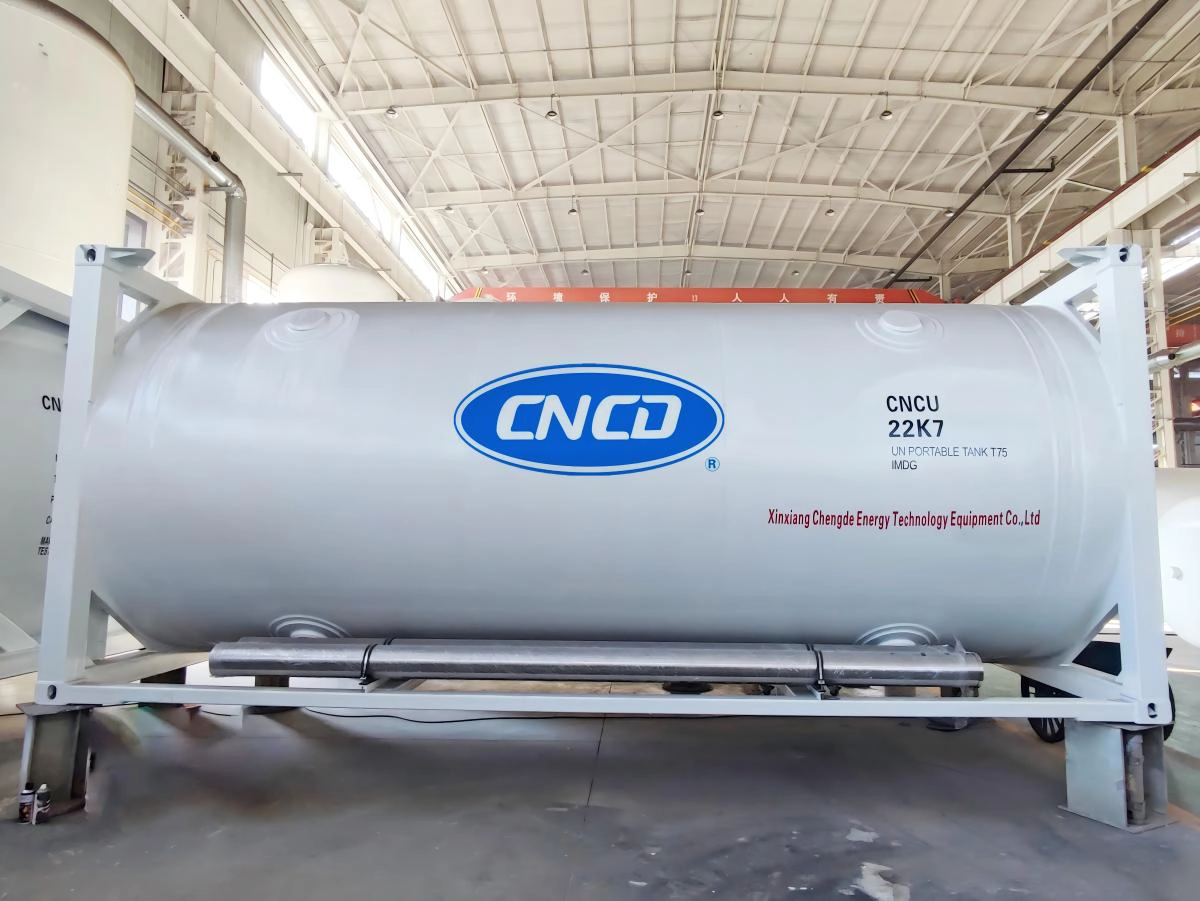 A 20ft cryogenic liquid argon iso tank container is a specialized storage and transportation unit designed to handle cryogenic liquids such as liquid argon at extremely low temperatures. Here are some of the key features and details of this type of container:
A 20ft cryogenic liquid argon iso tank container is a specialized storage and transportation unit designed to handle cryogenic liquids such as liquid argon at extremely low temperatures. Here are some of the key features and details of this type of container:
Key Features:
Cryogenic Insulation: The tank is heavily insulated to maintain the low temperatures required to keep argon in liquid form (argon liquefies at -185.9°C or -302.6°F). Common insulation materials include vacuum insulation panels or multi-layer insulation (MLI).
Material: The liner is typically made of stainless steel or other materials that can withstand low temperatures, while the outer shell is typically made of carbon steel for added durability.
Capacity: A 20ft ISO tank can hold large amounts of liquid argon, typically ranging from 10,000 to 26,000 liters, depending on the design and insulation efficiency.
Pressure Management: The tank is equipped with a pressure relief valve and venting system to manage pressure buildup caused by the evaporation of liquid argon.
ISO Standards: The container meets ISO intermodal standards and is suitable for transport by road, rail or sea.
Safety Features: Includes safety valves, pressure gauges and temperature monitoring systems to ensure safe operation.
Portability: Designed to be easily transported using standard ISO container handling equipment such as cranes, trucks and ships.
Applications:
Industrial Uses: Liquid argon is used in a variety of industrial processes, including welding, metal fabrication and as a shielding gas.
Medical Uses: Argon is used in medical applications such as cryosurgery and as a carrier gas in chromatography.
Scientific Research: Used in experiments requiring inert gases or cryogenic conditions in laboratories and research facilities.
Handling and Safety:
Training: Personnel handling cryogenic liquids must be trained in proper safety procedures.
Protective Equipment: The use of appropriate personal protective equipment (PPE), such as gloves, masks and insulating clothing, is essential.
Ventilation: Ensure that storage and handling areas are well ventilated to prevent the accumulation of argon gas, which can displace oxygen and pose a risk of asphyxiation.
Maintenance:Regular inspection and maintenance are essential to ensure the integrity of the insulation and functionality of the safety system.Pressure testing and leak checks should be performed regularly to maintain safety standards.
Transportation:Tanks must be securely secured during transport to prevent movement and potential damage.Hazardous goods transportation regulations must be followed.
The 20ft Cryogenic Liquid Argon ISO Tank Container is a critical piece of equipment for industries that require safe and efficient storage and transportation of liquid argon. Proper handling, maintenance and adherence to safety protocols are essential to ensure its effective and safe use.
 扫一扫咨询微信客服
扫一扫咨询微信客服